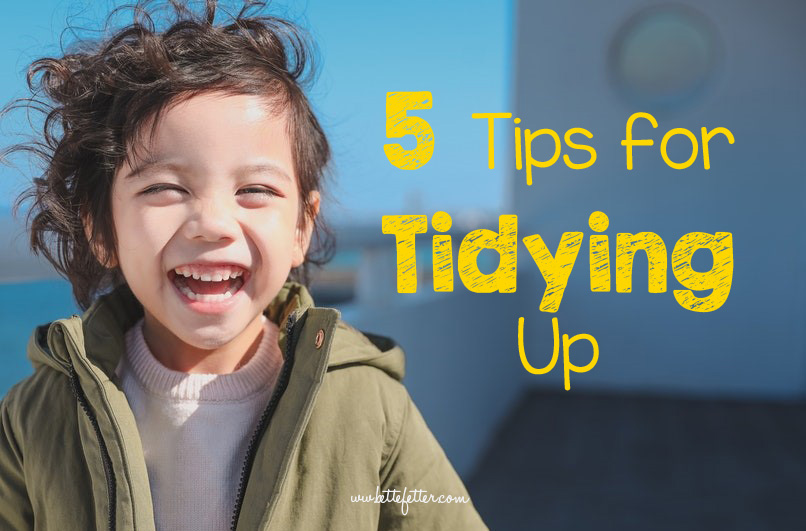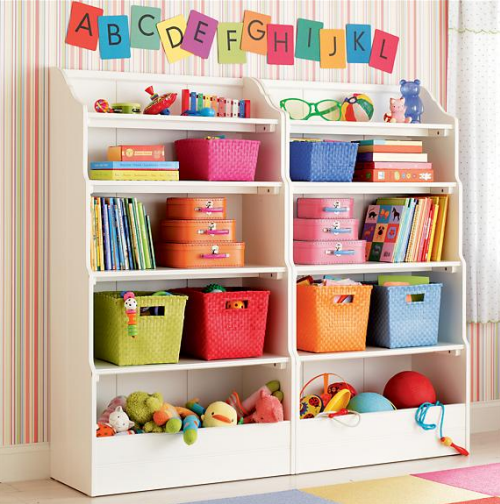Tidy Space, Happy Face

Every year, after the holidays, I get the urge to de-clutter and reorganize. I head over to Target and sure enough the holiday isles have been cleared and restocked with plastic bins of every shape and size. I’m in heaven. I buy a few bins for my own projects and a few for kid spaces. And as much as I’m not looking forward to the work this is going to take and the mess I’m going to make, I know life is going to be so much better when I’m finished.
As much as a good purging and de-clutter is for us as adults, it is even more significant for our kids, especially kids with ADD and ADHD. Children are in the process of developing internal order and the space around them profoundly affects them. When they’re operating with clutter all around, they are more likely to have clutter and chaos inside. When kids learn to create and maintain order in their physical space, they create and maintain order internally. In short, order on the outside helps create order on the inside.
Here are some things to think about when it’s time to organize your kid’s room.
All hands on deck: A big cleaning takes team effort and will need to be done in stages. Start with your own private review of the room or area that needs organizing. To get started, look at the structure of the room, the furniture, the way the room is used and consider ways to make it more effective. Purge what you can on your own, especially those things you know need to go but will be hard for your child to part with. Then invite your child help with the rest. They can help sort things to be saved, tossed, given away and put back in place.
Keep it age appropriate: The amount of a child’s involvement depends on their age and ability to do the necessary tasks and to be able to part with things. A big cleaning can be very overwhelming, even for the adults involved, so be mindful about how much to include them. It may be best for you to do the majority of the work without them even knowing, then invite them in for the finishing touches.
Respect your child’s attachments: A healthy balance is a must. Be sensitive to what your child needs to save and help them learn to release. That old shoelace or paper construction may hold special value – but perhaps there’s a toy they can pass on to a friend. Whatever it is, help them find value in the sorting and giving, without it becoming a negative or traumatic experience.
Shelves, Drawers, Baskets and Boxes are your friends. To create order and a more successful play space, put up a few shelves. Be sure they’re at a comfortable height for your child. Place toys and play sets in baskets and boxes to help make choices visible and keep pieces together. Don’t forget to add labels!
Set expectations to keep it up: Creating and maintaining organized spaces is not just about helping your child function more effectively. It’s also about establishing life long habits that will serve them well. Now that you’ve created an organized space, be sure to teach your child how to use it and maintain it. Encourage one toy or activity at a time, be sure they know how to put things back before starting something new. Expect dirty clothes to get in the hamper, dishes to find their way to the sink and toys to be picked up and put away regularly. And from time to time, dig in, pull it apart and put it back together again – parental assistance required.
Please remember, de-cluttering and organizing is a pretty thankless job. I can still hear my kids moaning and groaning and it was twenty years ago. But now as adults, every one of my kids keeps a very well organized house! And they’re happy about it.












tidying up review | art of tidying up review | Bette Fetter
February 5, 2019 @ 10:26 am
[…] feel guilty if you’re not chomping at the bit to get started. But you can get started by reading Tidy Space, Happy Face and picking one thing to tackle. You can send me before and after pictures at […]